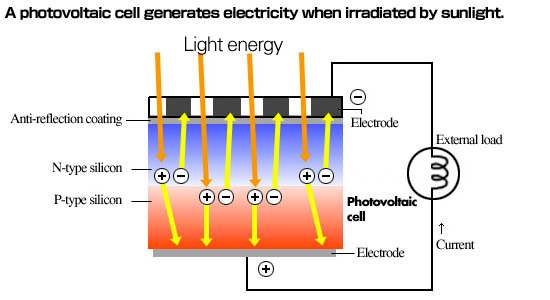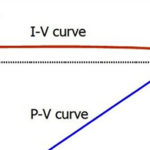Both small- and large-scale solar power on is an effective way of generating electrical power from an impinging light source, usually the sun. Colloquially, the term may also encompass a local light source such as overhead illumination; thus this, a more-accurate broad term is photovoltaic (PV) power.
Although the physics of the solar cell is complex and involves atomic-level concepts, this does not have to be fully understood in order to make use of this “free” source of energy and thus power. Part 1 will look at the solar cells themselves; Part 2 will look at transforming a solar cell’s output into useful power.
Q: What is a solar or photovoltaic cell, and solar or PV-based power?
A: A PV cell is a diode-like device which produces a small amount of current (and thus voltage) when light impinges on its surface; this is known as the photoelectric effect (note that Albert Einstein was awarded the Nobel Prize for his explanation of this effect, and his associated development of quantum theory, not for his theory of relativity!).
In simple terms, the energy of the impinging photons is absorbed by electrons in the PV cell, and this absorbed light energy generates particles with positive or negative charge (holes and electrons), which move within the cell. As the electrons are “knocked” free from their atoms, a flow of electricity is generated, Figure 1.

Q: What material is used for solar cells?
A: Again, the versatile element silicon is the basic material. It is doped with the gallium and arsenic impurities to act as a diode.
Q: How much power (current and voltage) can a solar cell deliver?
A: This amount is a function of the area exposed to light. The open-circuit output voltage of a solar cell is about 0.5 to 0.6 V and is normally denoted by Voc. Of course, open-circuit voltage alone does not mean useful power—that requires current as well. A solar cell under full sunlight can deliver tens of mA/square cm.
Q: What is the efficiency of a solar cell?
A: This is a complicated issue, as it depends on the wavelength of the impinging light, it’s intensity, the specifics of the cell’s fabrication, and other factors. In general, a high-end solar cell can convert 10-15% of the impinging sunlight into electrical energy. Another way to look at this is how much power is available from a solar cell. A maximum of about 1000 w/m2 of sunlight reaches the Earth under optimum conditions. Thus a solar cell can deliver about 100 W/m2. Nate that this number does not include unavoidable losses in the subsequent power-management system.
Q: What is a solar panel (also called a solar array)?
A: Depending on the application, the amount of power needed may range from a fraction of a watt for IoT energy harvesting, to megawatts for a large-scale grid system. It is not feasible to make single solar cells which are more than a few square cm in size. When building a solar-energy system, multiple solar cells are connected in a combination of series and parallel circuits to create a solar module which can deliver a larger amount of solar-based power.
Q: Can the output of a solar cell or panel be used directly by a system or circuit?
A: With rare exceptions, the answer is no, for several reasons. First, the output is obviously erratic DC due to varying illumination and conditions. Also, in order to extract maximum power for the solar cell, the interface circuit must dynamically adjust its operating parameters and point to match the variations in the cell performance (more on this in Part2).
Finally, many applications need DC rails of tens of volts, which an array would have difficulty in providing consistency, and other applications such as power grids need AC at high voltages. Therefore, the solar cell or panel output must go to a converter and regulator for stabilized DC output, or an inverter (or DC/AC conversion).
Part 2 will look at interface circuitry which manages the solar cell or panel to optimize performance.
References
- Electrical4u, “What is Photovoltaic Effect?”
- Electrical4u, “Working Principle of Photovoltaic Cell or Solar Cell”
- Energies, MDPI AG (Basel, Switzerland) “An Asymmetrical Fuzzy-Logic-Control-Based MPPT Algorithm for Photovoltaic Systems”
- Microchip Technology AN1521, “Practical Guide to Implementing Solar Panel MPPT Algorithms







[…] Part 1 looked at the solar cells themselves; Part 2 looks at how a cell or panel is managed for maximum performance. […]